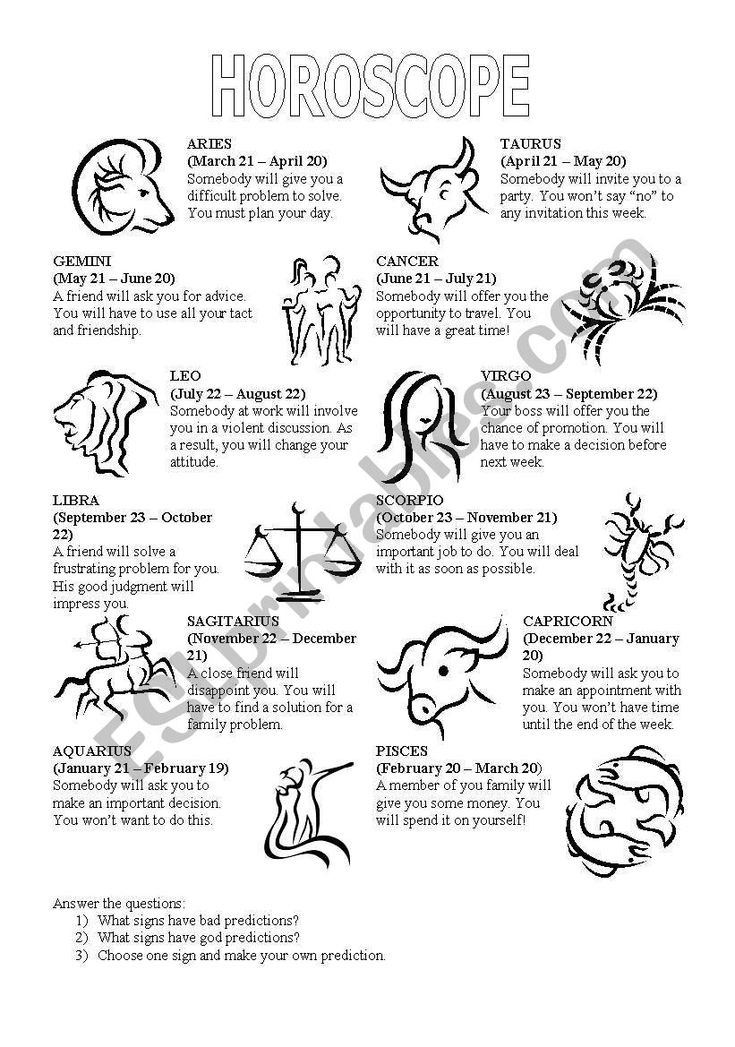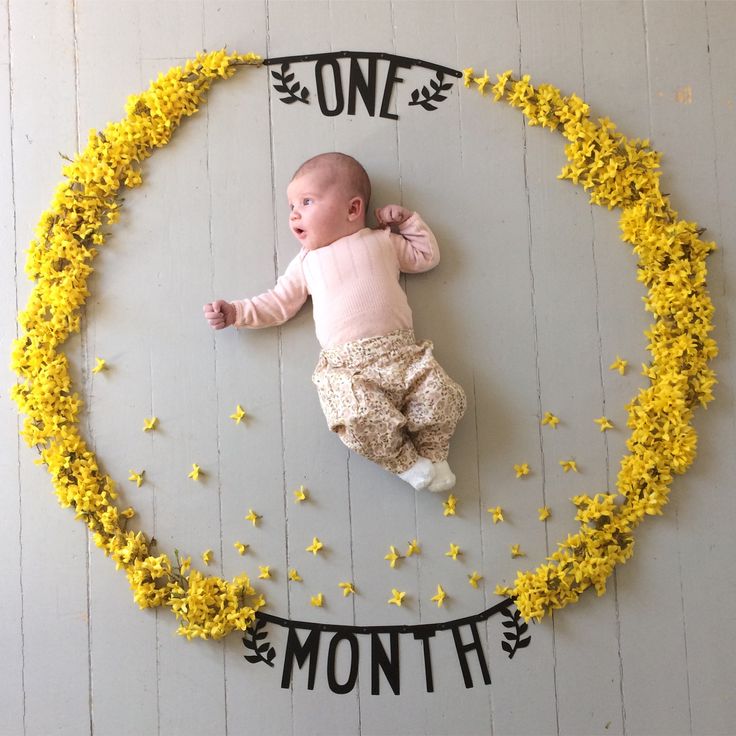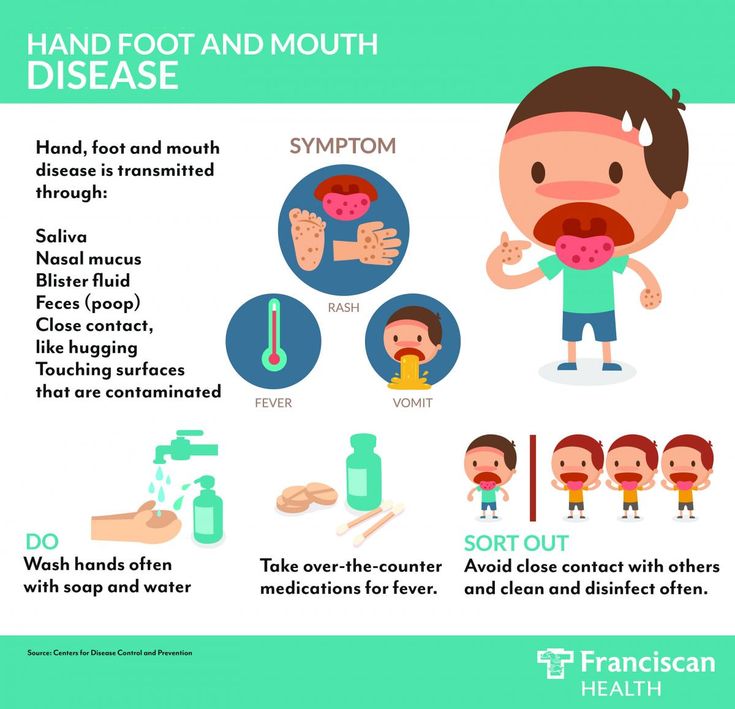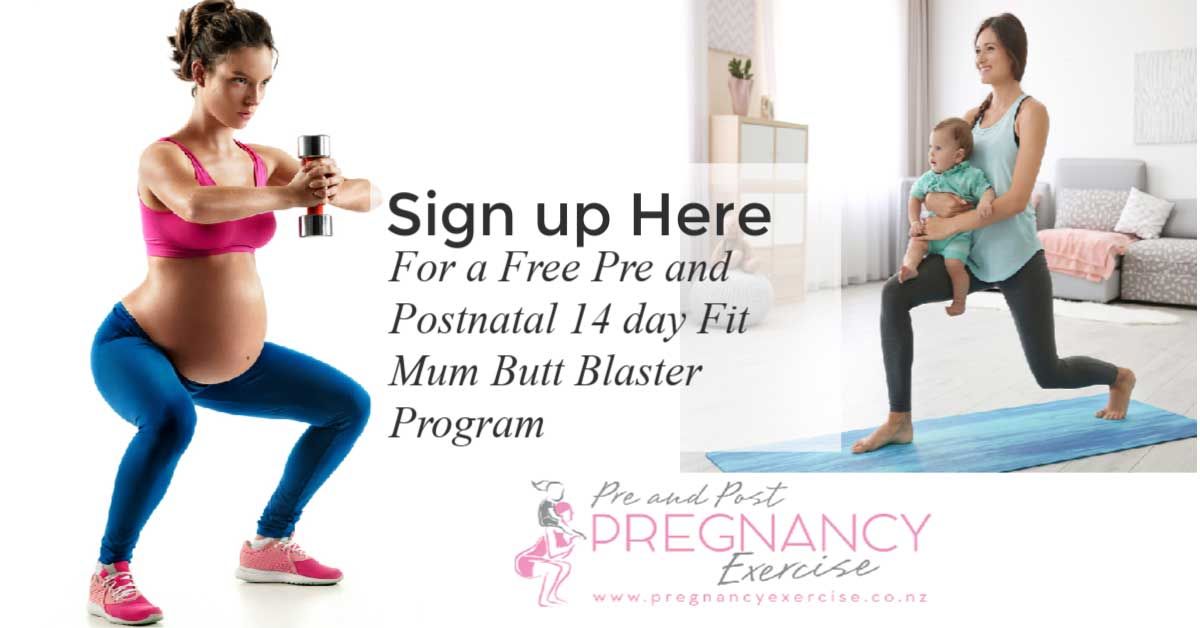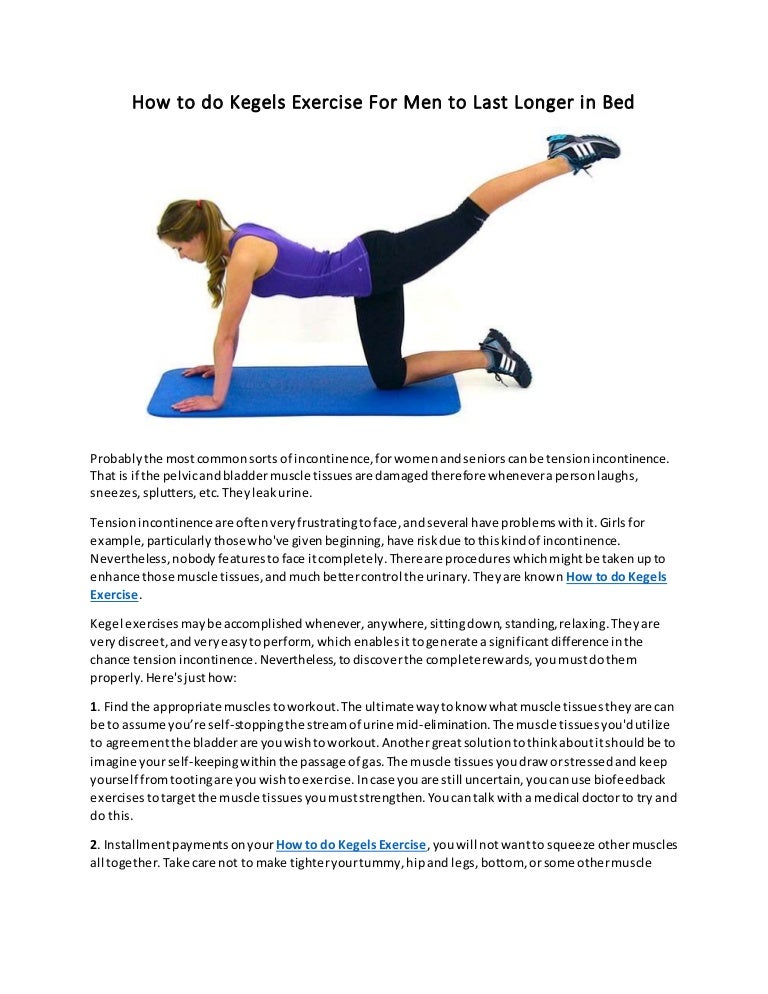What does birth feel like
What does unmedicated birth feel like?
Skip to content
Everyone experiences labor differently, with pain ranging from mild to severe.
It’ll start with waves of contractions. Some people describe the feeling as being like intense period cramps, others say it feels like a tightening or pounding feeling in your uterus or across your belly, others describe the feeling as being like very intense muscle cramps, while still other people describe contractions as being like the sort of wrenching intestinal cramps or gas pains that you might have a stomach virus. Sometimes you can even see these contractions across your belly as the uterus tightens. Some people might also have cramping, pressure, or pain that affects the lower back (called “back labor”), depending on how a baby is positioned, and this can be particularly intense. And some people feel these feelings of cramping, pressure, tightness, or pain in localized areas – the uterus, belly, torso, or back – and others feel it throughout their body. It’s very different for everyone and different with every pregnancy.
Regardless of how it feels for you, these contractions will grow in intensity as you move through labor, and many people find that as things intensify they prefer to move their bodies around in particular ways to try and find some relief – sitting on an exercise ball, getting on all fours, laboring in a tub if possible – or ask their care providers for help with relief. Throughout, some people report that they feel in control and empowered; others feel disconnected, like their bodies take control and do what needs to be done; and some feel a mix of in charge and out-of-body.
When it eventually comes time to push, many people say that they feel a great pressure in the rectal area, as if they need to have a bowel movement. For many people the act of bearing down and pushing also feels like having an intense bowel movement. (In fact, it’s pretty common to actually have a bowel movement during labor, as you use the same pelvic floor muscles to deliver vaginally. ) Pushing itself can be extremely tiring physically, like an incredibly physically demanding workout requiring intense focus. And despite the great deal of discomfort many people experience before getting ready to push, often the pushing can feel like it brings some relief.
) Pushing itself can be extremely tiring physically, like an incredibly physically demanding workout requiring intense focus. And despite the great deal of discomfort many people experience before getting ready to push, often the pushing can feel like it brings some relief.
Once your baby’s head starts to emerge, or crown, the physical sensation may feel intense in a new way. The crowning can feel like burning, stabbing, stretching, tearing, or intense pressure on your groin area, vagina, and rectum as your baby gets ready to make their way out into the world.
Once Baby is finally delivered, with a great rush, you’ll likely feel a strong sense of relief and even euphoria – brought on by a big release of the calming hormone oxytocin and also because your baby is finally here and you’re mostly done pushing. (You may, however, still need to push out the placenta. For most people, the uterus will continue to contract for some time to help things along, but it’s important that all of the placenta comes out after birth. Following this, you may need to get some stitches down below if you experienced any tearing as your baby was born.) This relief and euphoria will likely last about an hour before beginning to fade, which is when you’ll really start to feel all that your body’s been through. At this point, you’ll have been through a lot. Soreness and pain throughout your body – most notably in your groin, vagina, rectum, and your uterus – is common, as is bleeding from your vagina.
Following this, you may need to get some stitches down below if you experienced any tearing as your baby was born.) This relief and euphoria will likely last about an hour before beginning to fade, which is when you’ll really start to feel all that your body’s been through. At this point, you’ll have been through a lot. Soreness and pain throughout your body – most notably in your groin, vagina, rectum, and your uterus – is common, as is bleeding from your vagina.
One thing’s certain: you’ll be exhausted by the end, but it’ll all be worthwhile once Baby arrives.
Read more
- The Bradley method of childbirth
- Midwives: what they do and what you need to know
Sources
- Mayo Clinic Staff. “Signs of labor: Know what to expect.” Mayo Clinic. Mayo Clinic, 7/18/2013. Web.
- Shannon K. Laughlin-Tommaso. “Does back labor really happen?” Mayo Clinic. Mayo Clinic, 3/14/2015. Web.
- “Hormones Driving Labor and Birth.
 ” Childbirth Connection. Childbirth Connection, 4/11/2011. Web.
” Childbirth Connection. Childbirth Connection, 4/11/2011. Web.
Get the Ovia Pregnancy app
Ovia Pregnancy Journey Get our app at the Apple App Store Get our app at the Apple App Store Get our app at the Google Play Store Get our app at the Google Play StoreHow Painful Is Childbirth, Really?
Moaning, screaming, and cursing. These are some of the pleasant sounds commonly associated with childbirth.
You’ve likely seen birth graphically depicted on television, or if you’re pregnant, all of your family and friends may have decided to share their harrowing birth stories with you. If you’re like most women, this has led to a lot of fear about the amount of pain you’ll face during labor.
Is this really the truth about birth though? How much pain will you actually experience? Can you do anything to diminish that pain? While birth is different for everyone, we’ve got the information, tips, and tricks to help you feel prepared for the pain of childbirth.
Every person’s experience with birth will be different. Pain is subjective and can vary greatly. This means that you may have a very different pain experience from even your mother or sister.
It’s important to remember that the pain of childbirth is a manageable one, and both medicated and more holistic pain relief measures like visualization and massage are available.
Despite what you may have seen on YouTube or elsewhere, there’s no reliable unit to measure pain. Back in the 1940s, researchers tried to employ a device known as the dolorimeter, which used the heat from a light source, to establish levels of pain.
However, this measurement fell out of favor with growing evidence that pain isn’t solely dependent on an isolated physical sensation. Rather, it’s affected by a person’s fears, mood, memories, and personality, as well as factors like the duration and overall experience of the pain source.
Your healthcare provider will likely ask you to track and quantify your pain by rating it on a scale. They may discuss the intensity of the pain and your feelings about your ability to work through or manage it. This information will help them determine the appropriate pain relief options with you.
They may discuss the intensity of the pain and your feelings about your ability to work through or manage it. This information will help them determine the appropriate pain relief options with you.
Pain is not necessarily consistent during the labor process, and you’ll probably experience breaks from it between contractions or while pushing. Although, you may notice though that it increases after your water breaks or as labor picks up, and that some elements of the pain are temporary while others continue for a period of time after giving birth.
When you think about the pain of childbirth, just remember that it’s purposeful, anticipated, intermittent, and a necessary part of your baby coming into this world!
You can expect to experience a variety of sensations during the end of your pregnancy and labor.
During pregnancy, you may experience Braxton-Hicks contractions, which are usually irregular and inconsistent. They tend to be felt in the abdominal area and make the belly feel tight, causing discomfort more than pain.
One thing that sets these contractions apart from labor contractions is that they don’t become more consistent, stronger, and longer. (If you would like to reduce the discomfort of Braxton Hicks, you can try drinking some more water, changing position, or resting on your left side.)
Early labor
In the early stages of labor, contractions will increase in intensity and frequency as they fall into a steady pattern.
Early labor contractions will usually cause the abdomen to feel tight to the touch. You may also experience a dull backache, feelings of pressure in the abdomen and pelvis, and sensations similar to those of intense menstrual cramping.
When contractions begin, they may only be 30 to 45 seconds in length with several minutes of rest in between.
Active labor
As labor progresses, contractions may feel like they are wrapping around your body from the back to the front. You may also begin to notice cramping and discomfort in your legs as the contractions become more frequent and last closer to 1 minute in length.
When you’re approximately 8 centimeters dilated, you may have 30 seconds to 1 to 2 minutes between contractions as you prepare to enter the pushing stage of labor. During this time it’s not uncommon to feel lightheaded, nauseous, and have hot flashes or chills.
Pushing
When you are fully dilated (around 10 cm) and it’s time to push, you may feel an intense pressure that feels like you need to poop. You can relax a little knowing that your body is just telling you that it’s ready for you to help push out your baby.
During this period, you’ll typically be instructed to push with the peaks of your contractions. Because you’re pushing with the contractions, many women find these contractions less painful than the contractions helping them to dilate.
Other parts of the experience may also cause discomfort or pain, including an episiotomy or vaginal tearing. You may also feel muscle pain or fatigue from pushing or experience uncomfortable side effects from medications used during labor.
If you’re feeling nervous about giving birth, there are things you can do before and during labor to decrease your pain (and increase your chance of having a positive birthing experience!).
Before giving birth
Exercise frequently
While you may need to modify your normal exercise plan, it’s worth continuing to exercise during pregnancy. Regular exercise during pregnancy not only helps control your blood pressure, mood, and weight but also can help keep your body in shape for the work of labor.
Take a birth preparation class
Knowing what’s ahead can help you relax and feel more comfortable during labor. Most birth preparation classes include instruction on comfort measures during labor, so you and your partner can get ideas and practice before the big event. (While you’re at it, you may also want to sign up for a baby care or breastfeeding class!)
Eat well and take your prenatal vitamins
It’s important to put the right nutrients in your body to help your baby grow properly and give yourself energy for labor.
Consider optimal fetal positioning
It’s easier to birth your baby when they’re in an optimal position. If your baby is breech or transverse, you may want to consider actions that will encourage them to shift their position… before you go into labor!
During labor
Pain relief during labor is a personal choice. You can try any combination of the following methods.
Breathing techniques
Whether you choose to follow a particular breathing routine during labor or just need to do some low vocalizations to help you through the more intense contractions, focusing on your breathing can help you manage the pain.
Water
Even if you don’t want to give birth in water, spending some time in a shower or bath can help relieve the pain of childbirth.
Being in water has been found to be particularly effective in the first stage of labor. It can help relieve both pain and anxiety. If you have access to a moveable showerhead, aiming warm water directly onto the lower back may feel especially pleasant.
Massage and counterpressure
Many different types of massage can help manage pain during labor. Foot, hand, back, and shoulder rubs may all appeal to you. One study from 2010 found that a 15-minute massage each hour during labor helped alleviate pain and was even associated with shorter labor.
Additionally, perineal massage can help protect and prepare the perineum for the stretching involved in birthing a baby.
In addition to massage, many women enjoy pressure being strategically placed on parts of their body to help counteract the discomforts they may be feeling.
Music
Music can lower stress and blood pressure. It can also improve your mood! But can it really help with pain during labor? Yes — a large meta-analysis found that music interventions helped alleviate pain and anxiety during labor.
Visualization or hypnosis
Guided imagery, hypnotic tracks, and other visuals can all help relax a mother in labor and relieve pain.
Movement
Walking, rocking on a birthing ball, or even slow dancing with your partner can help labor progress and relieve some of the discomforts you may be feeling.
Experimenting with different positions, including sitting, standing, or squatting, may also help reduce pain. One study found squatting offered the most pain reduction, but you can experiment with what feels best for you.
A doula
Research shows that having a doula present at your birth can lead to a better birth outcome. A doula can help with positioning/counterpressure, offer suggestions for comfort measures, advocate for your choices, and help answer your questions throughout the laboring process.
Not sure where to find a doula? Start here.
A TENS unit
Many people have found some pain relief during labor by stimulating their lower back with a transcutaneous electrical nerve stimulation (TENS) unit. (Some hospitals even have TENS devices that you can borrow during labor!)
Aromatherapy
If you’re feeling nauseous or anxious, peppermint, lavender, or some citrus essential oils may provide some relief during labor.
IV narcotics
Intravenous (IV) narcotics offer some of the pain relief of an epidural for a more limited time. As in the case of an epidural, nausea, headaches, drowsiness, and the transmission of medication to the baby are potential risks.
As in the case of an epidural, nausea, headaches, drowsiness, and the transmission of medication to the baby are potential risks.
For a woman seeking a brief reprieve from the intensity of birth, an IV narcotic can be a very appealing pain relief option.
Nitrous oxide
While you may have seen it during dental visits, in the United States nitrous oxide is less commonly used as a pain relief option during childbirth. It’s a fast-acting option for pain and anxiety relief that doesn’t stay in the system as long as narcotics.
Nitrous oxide has been used for over a century and is generally considered safe for the mother and baby. While it’s used regularly in some locations around the world, you’ll need to check with your provider as to whether it’s available where you’re delivering.
Epidural
The most common pain medication for birthing mothers in the United States, an epidural can relieve the pain a mother is feeling within 10 to 20 minutes. Most hospitals provide epidural analgesia, and if your pain is beyond a manageble level, you can request one.
The vast majority of women who receive an epidural feel pressure and not pain from that point on in their labor. (Many women can even sleep while laboring once the epidural has been placed.)
There’s some risk that an epidural will result in a specific type of headache, pushing may be more difficult, your lower half may remain numb for a period of time after giving birth, or you may react to the medication used in the epidural. Still, many women find that the pain relief an epidural offers outweighs these risks.
There’s no way to know exactly what childbirth will be like for you. Even if you have given birth before, each experience is different. Taking steps to prepare beforehand and using comfort measures during labor can reduce the pain of childbirth.
There’s no reason to be fearful about giving birth. While it’s called labor for a reason, millions of babies are born each year. You’re not alone! Your care provider can work with you to ensure that you have the medication and holistic pain reduction measures you need to handle your contractions.
Childbirth. Painful and scary? No pain and no fear!
My charming beloved daughter is two years old. Two years of great happiness from communicating with this miracle, two years in the world of absolutely new and wonderful emotions... And during these years I regularly remember my pregnancy, the moment of the birth of my girl and the feelings that overwhelmed me then. I would like to share my personal experience of natural childbirth and thoughts that probably come to the mind of all expectant mothers, and especially those who are expecting their first child. nine0004
Starting from afar, I will say that I have a very low pain threshold, I can not stand any medical manipulations. In general, until the age of 25 (I gave birth at almost 29), the thought that I would someday have to give birth (and I always wanted a child) caused me horror and tears in my eyes. From my youth I was interested in medicine and re-read quite a lot of literature and articles from the Internet about childbirth long before pregnancy. I was just curious. And films with a standard image of childbirth complemented the already “colorful” picture: an operating room, screams, groans, inhuman torments, fussing doctors ... At that time, I saw childbirth as a test that had to be heroically passed. After reading stories about childbirth, I had the feeling that in the maternity hospital the main person in childbirth is a doctor who necessarily performs some kind of manipulation (“pierced the bladder”, “put an epidural”, “finally injected painkillers”, etc. .). At the same time, questions were spinning in my head: “How did they give birth before in villages with midwives without anesthesia? And how do the medicines that a woman is stuffed during childbirth affect the child and milk? nine0005
I was just curious. And films with a standard image of childbirth complemented the already “colorful” picture: an operating room, screams, groans, inhuman torments, fussing doctors ... At that time, I saw childbirth as a test that had to be heroically passed. After reading stories about childbirth, I had the feeling that in the maternity hospital the main person in childbirth is a doctor who necessarily performs some kind of manipulation (“pierced the bladder”, “put an epidural”, “finally injected painkillers”, etc. .). At the same time, questions were spinning in my head: “How did they give birth before in villages with midwives without anesthesia? And how do the medicines that a woman is stuffed during childbirth affect the child and milk? nine0005
Once again, surfing the Internet, I came across excerpts from Michel Auden's book "Reborn Childbirth", which turned my idea of them upside down and answered many questions. I fully agreed with the author, who wrote that childbirth is a natural process, and the main character in them is a woman who, it turns out, is able to give birth herself, you just need to give her this opportunity. Auden's ideas inspired me, but I understood that France is France, and I would have to give birth in a Russian maternity hospital (the prospect of home birth did not attract me), where they would hardly be reverent about my wishes ...
Auden's ideas inspired me, but I understood that France is France, and I would have to give birth in a Russian maternity hospital (the prospect of home birth did not attract me), where they would hardly be reverent about my wishes ...
I get the good news that my husband and I are expecting a baby! I began to look for a medical center where I could be observed during pregnancy, and I came to the Center for Traditional Obstetrics for information, where I learned about the Natural Birth program. To be honest, I have never even heard of such a “golden mean”, as I see it now, between standard and home births. The decision on where to give birth was made by me intuitively. I immediately felt that this was mine, that I had a chance to give birth on my own, as it was provided by Nature, which I really wanted. nine0005
Many people think that there is no reason to go to the courses, that you can read books and magazines, and everything that is taught in the courses will be forgotten at the time of childbirth anyway. Of course, this is everyone's choice. I believe that preparation for childbirth and courses for pregnant women are absolutely inseparable things. No books will tell what a practicing obstetrician will tell, they will not answer exactly your question. Personally, the courses have helped me a lot. Classes dedicated to childbirth radically changed my idea of labor pain, I realized that you should not be afraid of it, but you need to learn to accept it, not by clenching your teeth and clenching your teeth, but by relaxing, no matter how paradoxical it sounds. A film about childbirth (where none of the three women screamed in pain) finally convinced me that there is nothing terrible in this process. The most valuable result of the courses for me was that I became psychologically ready for childbirth. And as we all know, a lot comes from the head and inner mood. In the courses, we did not memorize breathing exercises, relaxation exercises, we were simply shown positions in which it might be convenient to endure contractions, explaining that during childbirth the body itself will tell you how comfortable it is in this or that period - and so it turned out in fact, or something the midwife will advise.
Of course, this is everyone's choice. I believe that preparation for childbirth and courses for pregnant women are absolutely inseparable things. No books will tell what a practicing obstetrician will tell, they will not answer exactly your question. Personally, the courses have helped me a lot. Classes dedicated to childbirth radically changed my idea of labor pain, I realized that you should not be afraid of it, but you need to learn to accept it, not by clenching your teeth and clenching your teeth, but by relaxing, no matter how paradoxical it sounds. A film about childbirth (where none of the three women screamed in pain) finally convinced me that there is nothing terrible in this process. The most valuable result of the courses for me was that I became psychologically ready for childbirth. And as we all know, a lot comes from the head and inner mood. In the courses, we did not memorize breathing exercises, relaxation exercises, we were simply shown positions in which it might be convenient to endure contractions, explaining that during childbirth the body itself will tell you how comfortable it is in this or that period - and so it turned out in fact, or something the midwife will advise.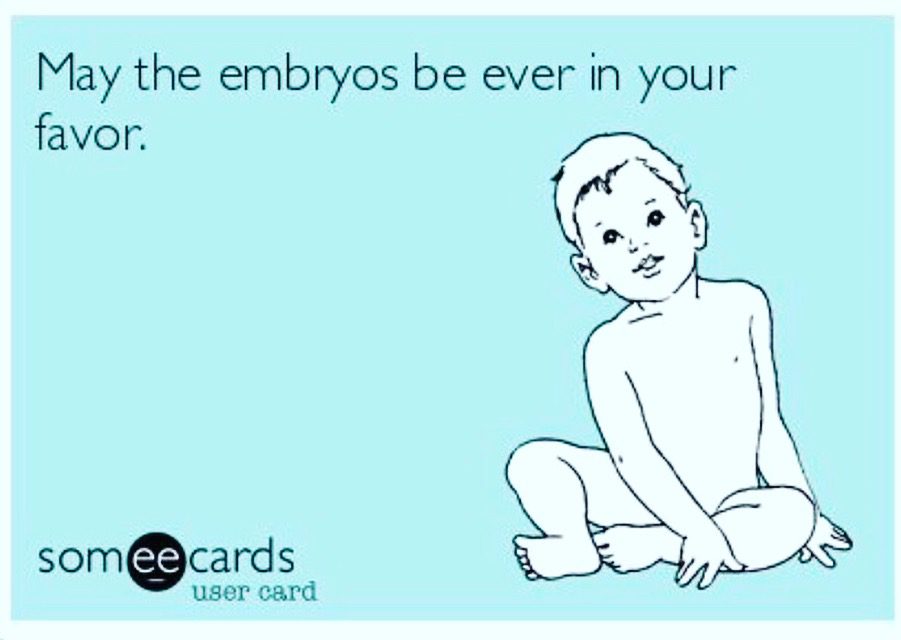 After the baby was born, the information received in the classes, where they talked about breastfeeding, caring for the baby, and the physiological characteristics of newborns, helped me a lot. I felt confident and knowing what to do with my own child. nine0005
After the baby was born, the information received in the classes, where they talked about breastfeeding, caring for the baby, and the physiological characteristics of newborns, helped me a lot. I felt confident and knowing what to do with my own child. nine0005
The Natural Birth program provided for several visits to the midwife who will take care of the birth, even two - the main one and the "backup". It was very important for me to be next to the person taking delivery, whom I already know, who sees you not for the first time, and in a place familiar to me (when concluding a contract in the maternity hospital, they showed me the ward where the birth takes place). For each visit to the midwife, I prepared a whole list of questions, and not only related to childbirth. Together we adjusted the list of things that you need to take with you to the hospital, the list of “dowry” for the child at home, several times we talked about the action plan when I understand that “something is starting”. nine0005
nine0005
...The birth began, as is often the case, at night. I felt my stomach begin to pull, but I decided that these were training contractions, which I had been waiting for. My husband advised me to call the midwife, but I decided not to disturb her at 12 midnight. Three hours later, I realized that this was no longer a “training” and called. The midwife arrived 40 minutes later, looked at me and said that you can go to the hospital. At the maternity hospital, I really appreciated the joint visit with the midwife, who saved me from standard unpleasant procedures (in my case, the body cleansed itself at home). My husband left (it was our mutual decision that I would give birth without him), and I stayed with the midwife. How grateful I was to Larisa for being by my side all the time! She suggested comfortable positions for me, gave me water to drink, poured a bath in which it was much easier for me to endure the contractions that were already very strong by that time, and at the same time she was, as it were, invisible. Almost all births we were with her together. The maternity hospital doctor came in the first time for a minute right after we settled in the ward, and the second time - at the last attempts, although, to be honest, her presence bothered me because her mobile phone constantly rang, and this, believe me, in such a crucial moment is very annoying. nine0005
Almost all births we were with her together. The maternity hospital doctor came in the first time for a minute right after we settled in the ward, and the second time - at the last attempts, although, to be honest, her presence bothered me because her mobile phone constantly rang, and this, believe me, in such a crucial moment is very annoying. nine0005
The labor itself (pulling) lasted almost two hours. As I now understand, in the maternity hospital they would hardly have bothered so much with me in the birth chair (and I wouldn’t have lasted there for so long). And the midwife waited patiently, periodically checking the baby's heartbeat, and encouraged me, saying that everything was in order.
Being attuned to childbirth without anesthesia, but knowing my inability to endure pain, before childbirth, even after the courses, in the depths of my soul I asked myself the question: “When will I still scream that I can’t take it anymore and demand anesthesia?”. Anesthesia was not required! At some moments it was more difficult than unbearably painful, it was physical fatigue at the end of the contractions (at that moment I said the only time: “I can’t take it anymore! I’m tired. ” But the midwife explained to me that the contractions were about to when they run out, and it becomes easier.This gave me new strength, and, indeed, after a couple of minutes they ended.
” But the midwife explained to me that the contractions were about to when they run out, and it becomes easier.This gave me new strength, and, indeed, after a couple of minutes they ended.
And then my baby was born! She didn't scream, but groaned calmly. The pediatrician immediately came to examine her, because. she had an umbilical cord around her neck, but everything was fine with her, and a minute later my daughter was placed on my chest! I did not cry with happiness (although before the birth I imagined this moment in this way), but lay and enjoyed the inexplicable calmness, stroking my baby. An hour later my husband arrived, and we were all together until evening.
Someone says that it is boring to lie in a separate room, that two or four people are more fun, but personally I didn’t need any communication, except communication with my own child! And it is much more convenient to receive relatives in a separate room. nine0005
The maternity hospital offered to take the baby for the night, I refused (but the nurses did not insist, they just said that if I wanted, I could give her at any time), because. I couldn't imagine my life without my baby. Before giving birth, many people told me that I needed to “rest,” that I would recover more slowly if I took care of the child myself from the first hours. But I initially had a mindset to be with the baby. Yes, I felt tired after giving birth, I sincerely envy those mothers who, a couple of hours after giving birth, were already ready to fly! This was not my case, I felt weak, “broken” all over my body, but in the first seven hours, the presence of my husband helped me a lot. From my experience, I can say that the best rest for a mother is to lie next to a sleeping baby. If the baby feels good and comfortable (again, with a mother nearby), then at first he sleeps a lot and lets him sleep and rest. And if something worries him, then his mother - her voice, hands, smell - is needed even more (of course, we are not talking about conditions requiring urgent medical intervention). Performing simple procedures - feeding, changing clothes - naturally makes you get out of bed and move.
I couldn't imagine my life without my baby. Before giving birth, many people told me that I needed to “rest,” that I would recover more slowly if I took care of the child myself from the first hours. But I initially had a mindset to be with the baby. Yes, I felt tired after giving birth, I sincerely envy those mothers who, a couple of hours after giving birth, were already ready to fly! This was not my case, I felt weak, “broken” all over my body, but in the first seven hours, the presence of my husband helped me a lot. From my experience, I can say that the best rest for a mother is to lie next to a sleeping baby. If the baby feels good and comfortable (again, with a mother nearby), then at first he sleeps a lot and lets him sleep and rest. And if something worries him, then his mother - her voice, hands, smell - is needed even more (of course, we are not talking about conditions requiring urgent medical intervention). Performing simple procedures - feeding, changing clothes - naturally makes you get out of bed and move. There was a very friendly staff in the maternity hospital No. 6, they showed me several times at my request how to swaddle and wash the baby, they answered all my questions. I don’t even talk about the role of living together in establishing breastfeeding, because. it's just obvious. nine0005
There was a very friendly staff in the maternity hospital No. 6, they showed me several times at my request how to swaddle and wash the baby, they answered all my questions. I don’t even talk about the role of living together in establishing breastfeeding, because. it's just obvious. nine0005
My baby girl was very calm from birth, she hardly cried, I think that this is partly because she was allowed to be born on her own. And I had a very good impression from the birth, a feeling of well-done responsible work. I remember a funny moment when already at the last attempts (!!!) for some reason the thought occurred to me that in French and English the word “work, labor” (travail, labor) also means “childbirth”. I told the midwife and the doctor about this, they looked at me with surprise, because, apparently, for the first time they encountered the fact that a few minutes before the birth of a child, a woman discusses philological nuances with them, but agreed with me. Childbirth really requires the active participation of a woman, her work with her own body, labor pain. nine0005
nine0005
There is an opinion that labor pain is quickly forgotten, because she is overwhelmed by the joy of having a baby. But I remember all my feelings very well and from my own experience I can say that there is no unbearable pain in childbirth. Many of my friends, hearing from me that I gave birth without stimulation, without anesthesia, and at the same time did not experience unbearable pain, unfortunately, they are sincerely surprised, and sometimes they do not believe. Why "Unfortunately? Because most people have stereotypes about childbirth, labor pain in their heads. But I am glad that I had an alternative, the opportunity, I repeat once again, to give birth on my own, as provided by Nature, and I took advantage of it. nine0005
Author: Nadezhda Kuzmina, August 2010
Harbingers - childbirth is coming soon!
Wrestler Maria Vladimirovna
Obstetrician-gynecologist
MD GROUP Clinical Hospital, Mother and Child Clinic Savelovskaya
False contractions
They may appear after the 38th week of pregnancy. False contractions are similar to Braxton-Hicks contractions, which a woman could already feel starting from the second trimester of pregnancy (the uterus seems to stiffen for a few seconds - a couple of minutes, then the tension in it subsides). False contractions train the uterus before childbirth, they are irregular and painless, the intervals between them are not reduced. Real labor pains, on the contrary, are regular, their strength gradually increases, they become longer and more painful, and the intervals between them are reduced. That's when you can already say that the birth began for real. In the meantime, false contractions are going on, it is not necessary to go to the maternity hospital - you can easily survive them at home. nine0005
False contractions are similar to Braxton-Hicks contractions, which a woman could already feel starting from the second trimester of pregnancy (the uterus seems to stiffen for a few seconds - a couple of minutes, then the tension in it subsides). False contractions train the uterus before childbirth, they are irregular and painless, the intervals between them are not reduced. Real labor pains, on the contrary, are regular, their strength gradually increases, they become longer and more painful, and the intervals between them are reduced. That's when you can already say that the birth began for real. In the meantime, false contractions are going on, it is not necessary to go to the maternity hospital - you can easily survive them at home. nine0005
Abdominal prolapse
Approximately two to three weeks before birth, the baby, in preparation for birth, presses the presenting part (usually the head) against the lower part of the uterus and pulls it down. As a result, the uterus moves lower into the pelvic region, its upper part ceases to put pressure on the internal organs of the chest and abdominal cavity. In the people it is called - the stomach dropped. As soon as the stomach drops, the expectant mother notices that it has become easier for her to breathe, but, on the contrary, it becomes more difficult to sit and walk. Heartburn and belching also disappear (after all, the uterus no longer presses on the diaphragm and stomach). But, having dropped down, the uterus begins to put pressure on the bladder - naturally, urination becomes more frequent. nine0005
In the people it is called - the stomach dropped. As soon as the stomach drops, the expectant mother notices that it has become easier for her to breathe, but, on the contrary, it becomes more difficult to sit and walk. Heartburn and belching also disappear (after all, the uterus no longer presses on the diaphragm and stomach). But, having dropped down, the uterus begins to put pressure on the bladder - naturally, urination becomes more frequent. nine0005
For some, uterine prolapse causes a feeling of heaviness in the lower abdomen and even slight pain in the area of the inguinal ligaments. These sensations arise due to the fact that the child's head, moving down, irritates the nerve endings of the pelvic organs.
During the second and subsequent births, the belly drops later - just before the birth. It happens that this harbinger of childbirth is not at all.
Removal of the mucous plug
This is one of the main and obvious harbingers of childbirth. During pregnancy, the glands in the cervix produce a secret (it looks like a thick jelly and forms the so-called cork), which prevents various microorganisms from entering the uterine cavity. Before childbirth, under the influence of estrogens, the cervix softens, the cervical canal opens slightly and the cork can come out - the woman will see that there are mucus clots on the linen that look like jelly. Cork can be of different colors - white, transparent, yellowish-brown or pink-red. Often it is stained with blood - this is completely normal and may indicate that childbirth will occur within the next day. The mucus plug can come out all at once (at once) or come out piecemeal throughout the day. nine0005
During pregnancy, the glands in the cervix produce a secret (it looks like a thick jelly and forms the so-called cork), which prevents various microorganisms from entering the uterine cavity. Before childbirth, under the influence of estrogens, the cervix softens, the cervical canal opens slightly and the cork can come out - the woman will see that there are mucus clots on the linen that look like jelly. Cork can be of different colors - white, transparent, yellowish-brown or pink-red. Often it is stained with blood - this is completely normal and may indicate that childbirth will occur within the next day. The mucus plug can come out all at once (at once) or come out piecemeal throughout the day. nine0005
Weight loss
Approximately two weeks before delivery, weight loss may occur, usually by 0.5–2 kg. This happens because excess fluid is removed from the body and swelling decreases. If earlier during pregnancy, under the influence of the hormone progesterone, fluid in the body of a pregnant woman accumulated, now, before childbirth, the effect of progesterone decreases, but other female sex hormones - estrogens - begin to work hard, they remove excess fluid from the body of the expectant mother.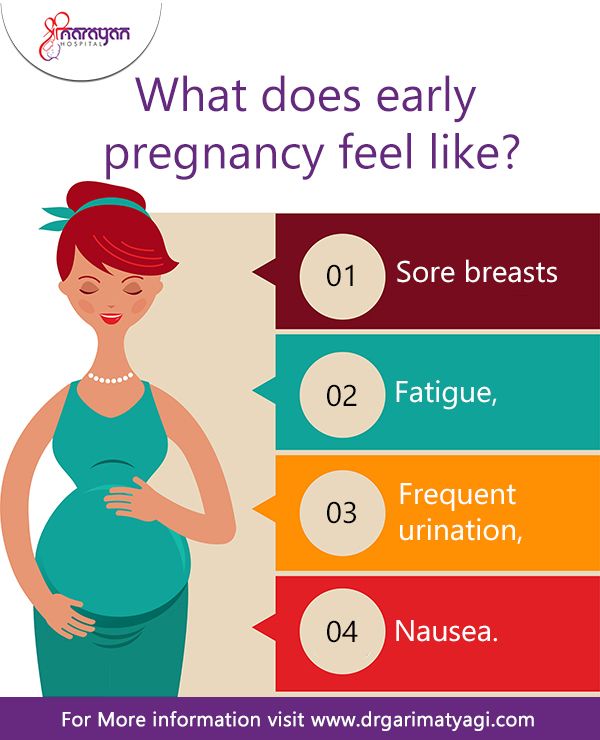 nine0005
nine0005
In addition, the expectant mother often notices that at the end of pregnancy it became easier for her to put on rings, gloves, shoes - this means that swelling on the hands and feet has decreased.
Change of stool
Right before childbirth, hormones often act on the intestines - they relax its muscles, as a result, stool disorder begins. Sometimes such frequent (up to 2-3 times a day) and even loose stools are mistaken for an intestinal infection. But if there is no nausea, vomiting, discoloration and smell of feces, or any other symptoms of intoxication, you should not worry: this is one of the harbingers of the upcoming birth. nine0005
And on the eve of childbirth, you often don't feel like eating at all. All this is also the preparation of the body for natural childbirth.
Mood changes
Many women experience mood changes a few days before giving birth. The expectant mother gets tired quickly, she wants to have more rest, sleep, even some kind of apathy appears.
